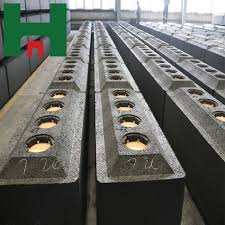How Carbon Anode Butts are Recycled in Industrial Processes
Carbon anode butts are the remnants of carbon anodes used in aluminum production during the Hall-Héroult process. These butts, which contain valuable carbon material, can be recycled and repurposed to minimize waste, reduce costs, and support sustainable practices in the aluminum industry. This blog explores the recycling process of carbon anode butts, their industrial applications, and the benefits of integrating recycling into production workflows.
What Are Carbon Anode Butts?
Carbon anode butts are the leftover portions of anodes that remain after the electrolytic reduction of alumina to aluminum. While most of the anode is consumed during the process, the remaining butt still contains carbon and trace amounts of other materials, making it suitable for recycling.
Why Recycle Carbon Anode Butts?
Cost Efficiency
- Recycling reduces the need for new raw materials like petroleum coke and pitch, lowering production costs.
Environmental Benefits
- Recycling minimizes waste and reduces the environmental impact associated with disposal.
Resource Optimization
- Maximizes the use of carbon materials, ensuring a sustainable supply chain.
Energy Savings
- Reduces the energy required to process raw materials compared to producing new anodes.
Steps in Recycling Carbon Anode Butts
1. Collection and Transportation
- Anode butts are collected from electrolytic cells and transported to recycling facilities.
2. Cleaning
- The butts are cleaned to remove impurities, including bath residues, alumina, and cryolite. This step ensures high-quality recycled material.
3. Crushing and Grinding
- Cleaned anode butts are crushed and ground into smaller particles suitable for reuse.
4. Separation
- Magnetic and other separation methods are used to remove metallic impurities and ensure a pure carbon product.
5. Reintroduction into Anode Production
- The recycled carbon is blended with fresh raw materials (like calcined petroleum coke and pitch) and used in the production of new anodes.
Applications of Recycled Carbon Anode Butts
New Anode Production
- Recycled carbon is a primary ingredient in creating new anodes for aluminum production.
Fuel Source
- Carbon anode butts can be used as a fuel source in cement kilns and other high-temperature industrial processes.
Metallurgical Processes
- Serve as a reducing agent in metal refining and other industrial applications.
Chemical Industry
- Used as raw material for producing activated carbon and other carbon-based products.
Benefits of Recycling Carbon Anode Butts
1. Economic Benefits
- Reduces reliance on expensive raw materials, making aluminum production more cost-effective.
2. Environmental Sustainability
- Decreases the amount of carbon waste sent to landfills and reduces emissions from disposal processes.
3. Energy Efficiency
- Saves energy by reusing carbon compared to producing it from scratch.
4. Regulatory Compliance
- Helps industries meet environmental regulations and sustainability targets.
Challenges in Recycling Carbon Anode Butts
Impurities
- Removing impurities like cryolite and metallic residues can be challenging and costly.
Logistical Issues
- Efficient collection, transportation, and storage of butts require well-planned logistics.
Process Costs
- The recycling process itself involves additional costs, which may offset some economic benefits.
Quality Control
- Ensuring consistent quality in recycled carbon can be complex due to variations in butt composition.
Technological Innovations in Recycling
Advanced Cleaning Methods
- Innovative cleaning technologies are improving the removal of impurities from anode butts.
Automation
- Automated systems are streamlining the collection, crushing, and separation processes.
AI and IoT
- AI-powered systems are optimizing recycling workflows and predicting material quality for better efficiency.
Future of Carbon Anode Butt Recycling
Increased Industry Adoption
- More aluminum producers are adopting recycling to meet sustainability goals.
Improved Technologies
- Advancements in separation and purification technologies will make recycling more efficient and cost-effective.
Circular Economy Models
- Recycling anode butts supports a circular economy by integrating waste materials back into production.
Conclusion
Recycling carbon anode butts is a vital process for the aluminum industry, offering significant environmental and economic benefits. By incorporating recycled carbon into anode production, industries can reduce costs, minimize waste, and support sustainable practices.
With advancements in recycling technologies and increased focus on sustainability, carbon anode butt recycling will continue to play a crucial role in optimizing aluminum production processes and contributing to a greener future.
